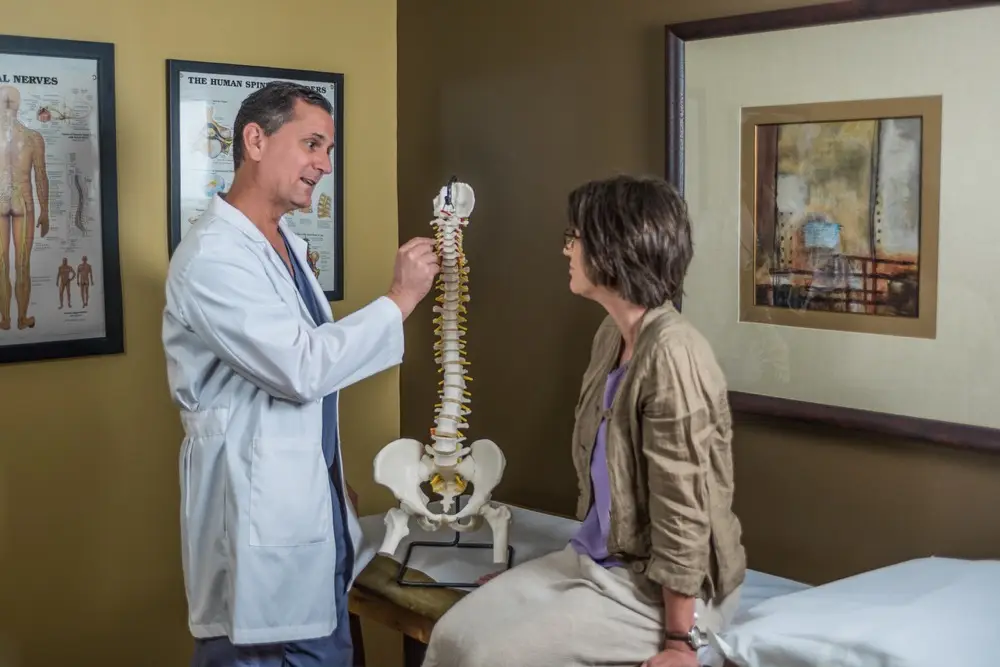Not all back pain is alike. Even though it may seem to be occurring in the same area of the body, understanding the type of back pain is more important for its treatment than knowing where it seems to emanate.
Such is the case with pain that will often start in the lower back and then quickly “shoot” through the buttocks and legs. To the patient experiencing this pain, it is back pain or, perhaps, leg pain. However, to a spine specialist, this could be sciatica, and this knowledge plays a huge role in relieving this pain.
 “Sciatica is not really a disease or injury, but rather it is a symptom where the patient experiences pain down his leg,” noted Dr. Michael Hisey, a spine surgeon at Texas Back Institute. “The condition gets its name in association with the large sciatic nerve that runs along the legs and controls many of the muscles in the leg.
“Sciatica is not really a disease or injury, but rather it is a symptom where the patient experiences pain down his leg,” noted Dr. Michael Hisey, a spine surgeon at Texas Back Institute. “The condition gets its name in association with the large sciatic nerve that runs along the legs and controls many of the muscles in the leg.
“To use an analogy, the sciatic nerve is like a large river with many smaller tributaries composed of the nerve roots. These all come together behind the gluteus muscle (located in the hip area), forming the sciatic nerve. The nerve emanates from the lower lumbar spine and passes through the buttocks, down the back of each leg, to the soles of the feet and the big toes.
“Unlike many other nerves, which are usually small, wispy tissues, the sciatic nerve is about the size of a human finger. Pain can occur when the sciatic nerve is compressed, most often in the nerve roots.”
What Causes This Compression?
People who suffer from acute or chronic back pain are more susceptible to sciatica. The risk for this condition increases in patients who smoke, are obese or spend a great deal of time in sedentary positions.
“The most common cause of this condition is a herniated disc in the back where a piece of disc impinges on the nerve,” Dr. Hisey said. “When this happens, the patient experiences pain everywhere the nerve travels. Since many of these nerves go down the back of the leg, the pain is perceived in a different area of the body than from where it starts. The patient may say, ‘I have pain in my leg,’ but the pain is, in fact, coming from an upper area of the spine where the nerve is compressed.”
A Test to Determine Sciatica
“There is a simple test to determine if the pain is due to nerve compression,” Dr. Hisey said. “When the patient bends forward from the waist and attempts to touch his toes, if a sharp, ‘electrical’ pain goes down the leg, this suggests a compressed nerve, and in most cases, it is associated with an injury to the back.
“There is also another, less common sciatic condition called piriformis syndrome. This involves a small muscle that goes along the back of the hip that connects the pelvis to the femur bone. It allows for the rotation of the hip. If that muscle becomes inflamed, thickens or becomes stiff, it can cause compression of the sciatic nerve.”
When Should a Patient Seek Medical Attention?
“Pain is the most common reason patients seek medical help for this condition,” Dr. Hisey said. “However, the more serious reason for concern is bodily dysfunction.
“For example, if the herniated disc is large enough to cause one’s leg to hurt, it may also be causing nerve damage. The symptoms for this nerve damage are a weakness in the same leg that hurts, numbness, and, in severe cases, problems with bowel or bladder control.
“If the nerve damage progresses to this point and it is not treated promptly and properly, it can become permanent fairly quickly. In some cases, particularly after the severe pain subsides, some patients attempt to ‘ride it out.’ This is a mistake because the damage could become permanent.”
Treatment for Sciatica
In most cases, the treatment for this condition does not require surgery.
“Fortunately, most patients do not have this severe damage,” Dr. Hisey said. “They have a pain problem, and this can be treated in non-invasive ways.
“Most of these patients improve over time with physical therapy or chiropractic treatment and medication. Eventually, the body will absorb any small pieces of the damaged disc, but this can take quite a long time.
“If there is serious nerve compression, we do what is necessary to reduce this. Usually, this involves the surgical removal of a fragment of the disc that is causing the compression.”
Using Regenerative Medicine to Treat this Condition
Research is currently being conducted on behalf of the FDA at Texas Back Institute to test the viability of using regenerative medicine to correct spinal injuries. This includes sciatica. While not yet proven, some feel that stem cell therapy could be used to “patch the hole” in the damaged disc.
“This is what I call ‘hopeful’ therapy,” Dr. Hisey said. “Unfortunately, stem cell treatment is often marketed as a cure for damaged tissue by unscrupulous practitioners. Since this treatment is not covered by insurance, some clinics are making a great deal of money from cash-paying patients for treatment that is not yet proven to work.
“When it comes to ‘patching the hole’ in the disc with regenerated tissue, this is problematic. Using another analogy, think of these discs as radial tires, with strong fibers on the outside and air in the inside. If these fibers tear and they are repaired with glue, they are not going to be that strong in the future.
“While some spine specialists believe that back pain may be reduced with the regenerated tissue of the bones, a herniated disc that can cause sciatica is a different situation. The regenerated tissue could be weaker than the original tissue of the disc. The jury is still out on using stem cells for herniated discs.
“If a piece of the disc is putting pressure on the nerve, the primary medical objective is to take the pressure off the nerve by removing the damaged tissue.”
If you would like to hear the complete interview with Dr. Michael Hisey, click on the SpineTalk below.



